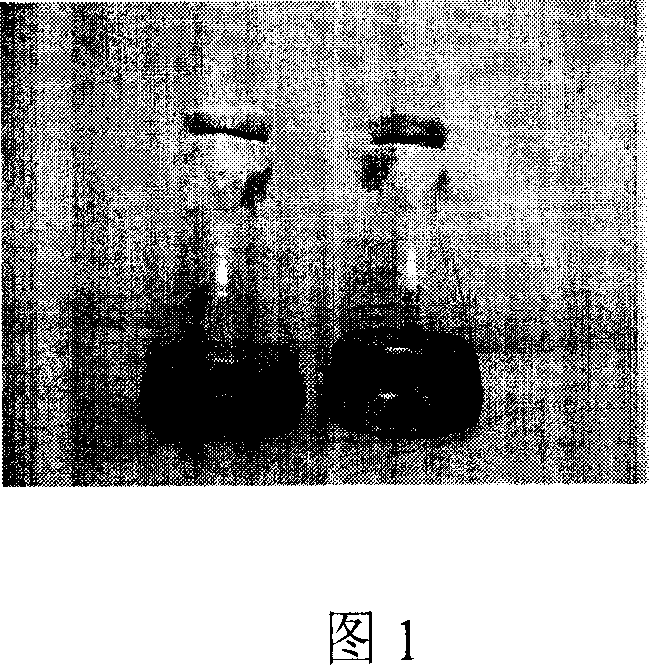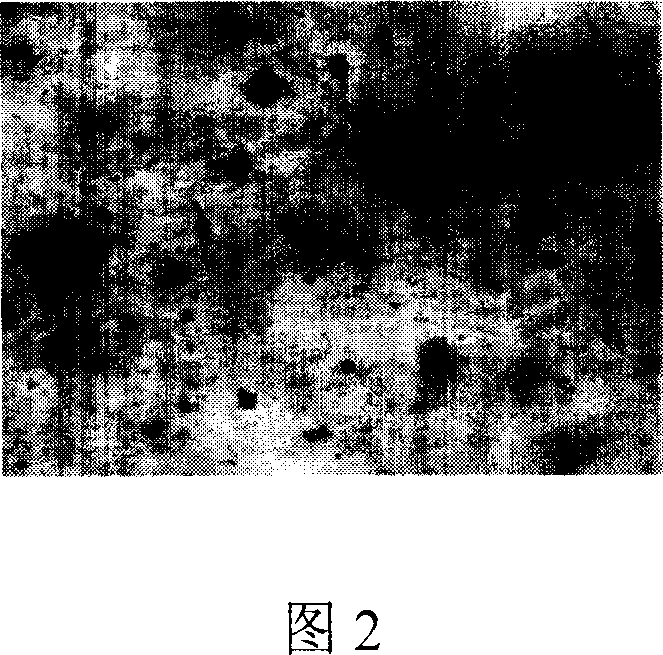Process for biological treatment of thick-oil waste water
A heavy oil wastewater and biological treatment technology, applied in the field of microbial treatment of water pollution, can solve the problems of failing to meet design standards and current needs, COD removal rate less than 30%, low biological treatment efficiency, etc., to achieve less variation and lower cost Low, strong removal effect
- Summary
- Abstract
- Description
- Claims
- Application Information
AI Technical Summary
Problems solved by technology
Method used
Image
Examples
Embodiment 1
[0022] Alternaria alternate is used to prepare bacteria after activation and multiplication culture, and then added to heavy oil wastewater to treat heavy oil wastewater; the details are as follows:
[0023] (1) Activation of bacteria
[0024] In a test tube containing a slant medium, use an inoculation loop to pick the bacteria to inoculate Alternaria alternate, and place it in a 30°C incubator for 3 days until black spores appear. The composition of the slant medium is: 2% glucose, 20% potato, 0.05% KH 2 PO 4 , 0.025% MgSO 4 , 2% agar, natural pH, the balance is water as a solvent; sterilize at 121°C, 0.1MPa for 30min.
[0025] (2) Proliferation culture
[0026] Use an inoculation loop to pick well-growing bacteria from the slope and inoculate them into a conical flask filled with liquid medium, and culture them on a shaker with a temperature set at 28°C and a rotation speed of 180rpm for 3 days until there are a large number of bacteria in the liquid medium. Propagatio...
Embodiment 2
[0033] The difference from Example 1 is:
[0034] (1) Activation of bacteria
[0035] In a test tube containing a slant medium, use an inoculation loop to pick the thalli to inoculate Alternaria alternate, and place it in an incubator at 28°C for 4 days until black spores appear. The composition of the slant medium is: 3% glucose, 25% potato, 0.15% KH 2 PO 4 , 0.035% MgSO 4 , 1.5% agar, natural pH, the balance is water as a solvent; sterilize at 121°C, 0.1MPa for 30min.
[0036] (2) Proliferation culture
[0037] Use an inoculation loop to pick well-growing bacteria from the slope and inoculate them into a conical flask filled with liquid medium, and culture them on a shaking table with a temperature set at 30°C and a rotation speed of 120rpm for 2 days until there are a large number of bacteria in the liquid medium. Propagation; liquid medium composition: 3% glucose, 25% potato, 0.15% KH 2 PO 4 , 0.035% MgSO4 , the pH is natural, and the balance is water as a solvent; ...
Embodiment 3
[0043] The difference from Example 1 is:
[0044] (1) Activation of bacteria
[0045] In a test tube containing a slant medium, an inoculation loop was used to pick the thalline to inoculate Alternaria alternate, and place it in an incubator at 25°C for 3 days until black spores appeared. The composition of the slant medium is: 1.5% glucose, 15% potato, 0.10% KH 2 PO 4 , 0.03% MgSO 4 , 1.4% agar, natural pH, the balance is water as a solvent; sterilize at 121°C, 0.1MPa for 30min.
[0046] (2) Proliferation culture
[0047] Use the inoculation loop to pick the well-growing bacteria from the slope and inoculate them into the Erlenmeyer flask containing the liquid medium, and cultivate them on the shaker with the temperature set at 25°C and the rotation speed of 150rpm for 3 days until the bacteria in the liquid medium Massive propagation; the composition of the liquid medium is: 1.5% glucose, 15% potato, 0.10% KH 2 PO 4 , 0.03% MgSO 4 , the pH is natural, and the balance...
PUM
| Property | Measurement | Unit |
|---|---|---|
| Removal rate | aaaaa | aaaaa |
Abstract
Description
Claims
Application Information
 Login to View More
Login to View More - R&D
- Intellectual Property
- Life Sciences
- Materials
- Tech Scout
- Unparalleled Data Quality
- Higher Quality Content
- 60% Fewer Hallucinations
Browse by: Latest US Patents, China's latest patents, Technical Efficacy Thesaurus, Application Domain, Technology Topic, Popular Technical Reports.
© 2025 PatSnap. All rights reserved.Legal|Privacy policy|Modern Slavery Act Transparency Statement|Sitemap|About US| Contact US: help@patsnap.com


